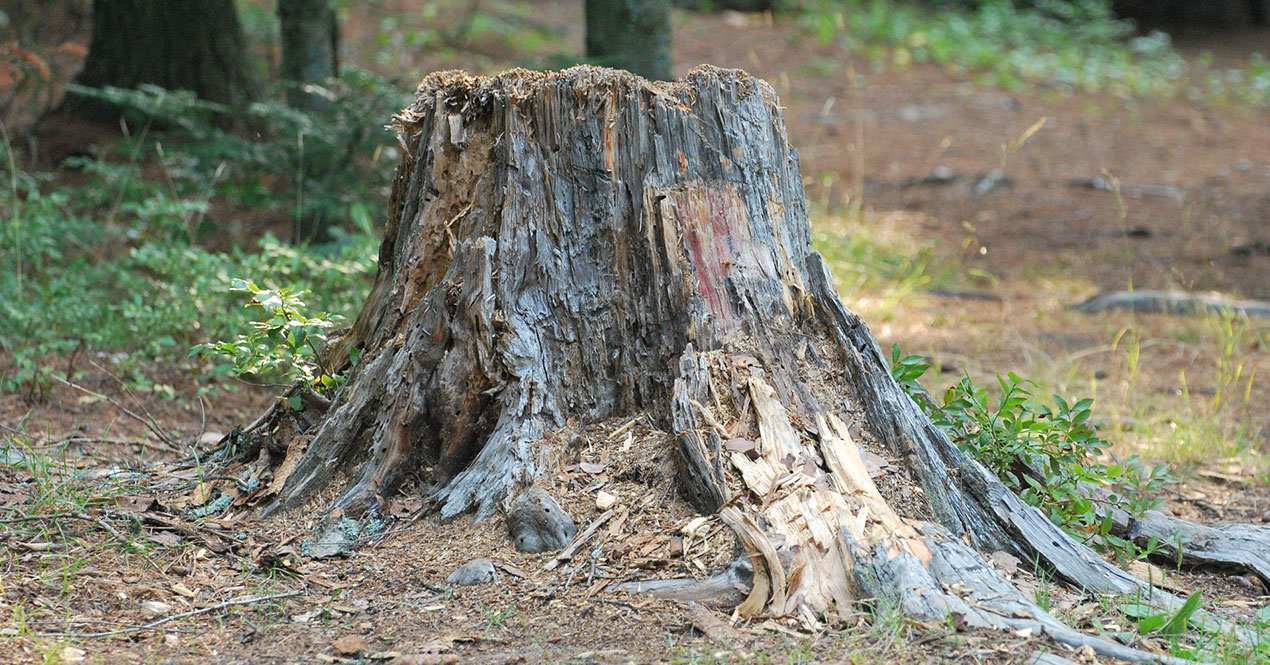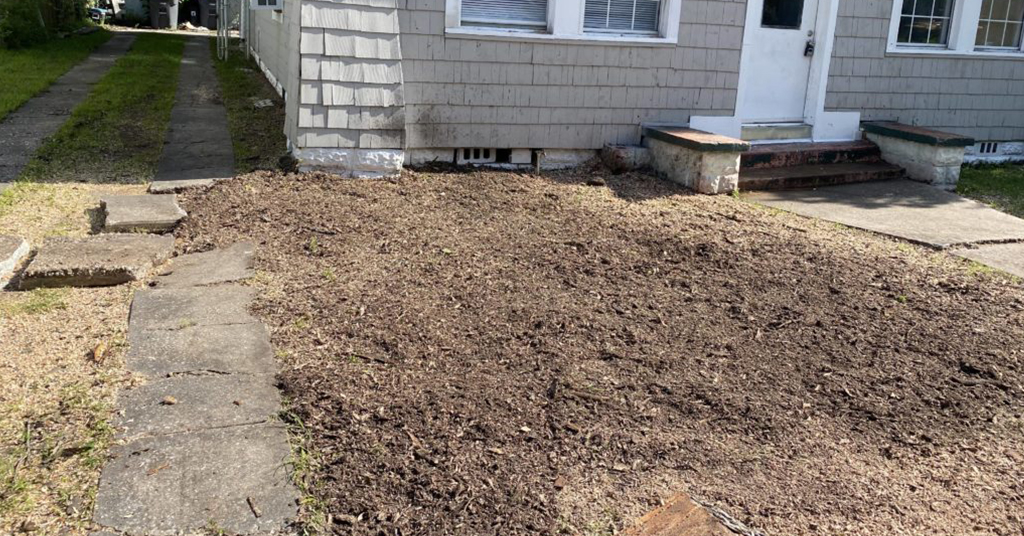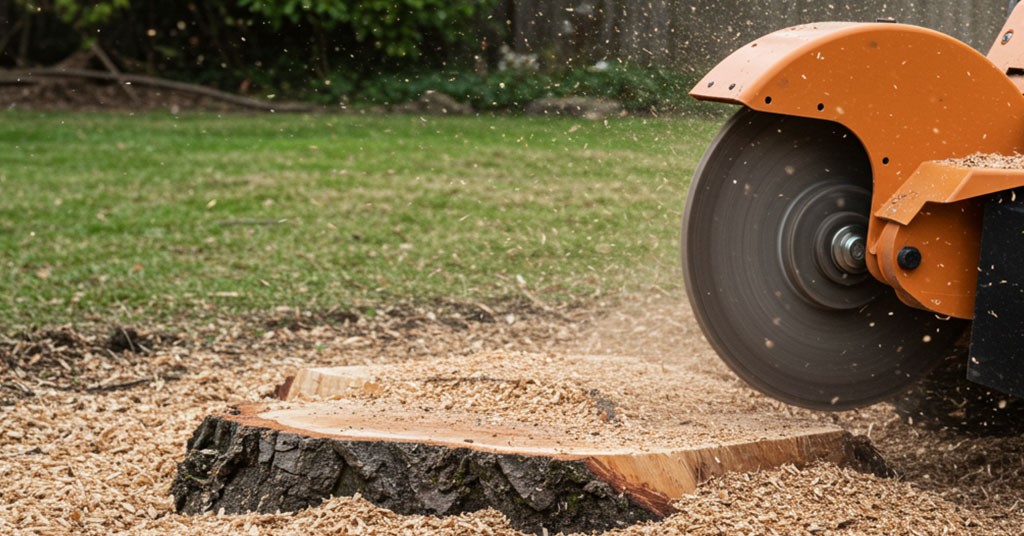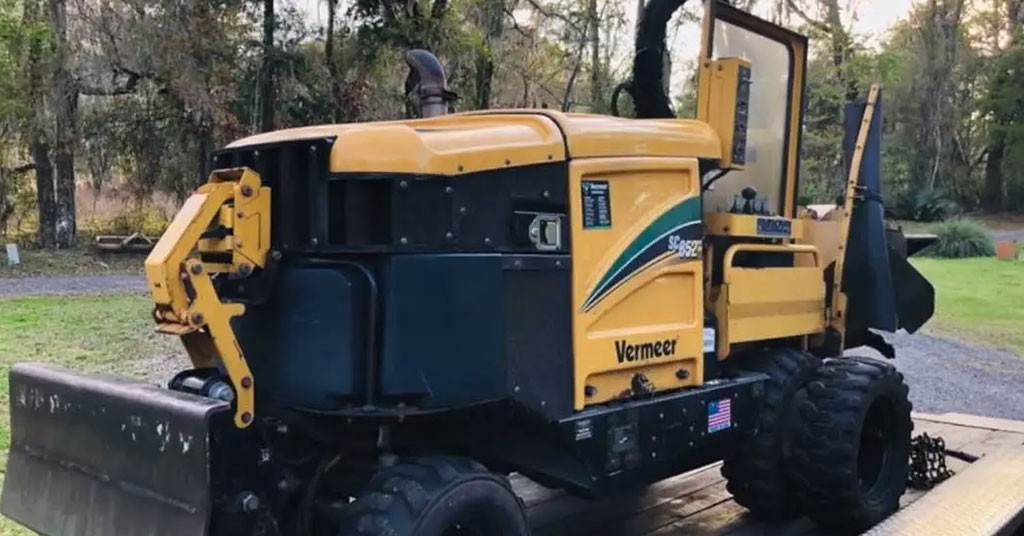

- 01 Oct, 2023
- Jacksonville Stump Grinding
Have you become weary of staring at the obstinate tree stump in your yard? By using a DIY stump grinder, take control of the situation. You can become an expert at tree removal with the appropriate equipment and methods. Give that ugliness the boot and welcome a new beginning. Let's get to work!
Basics of Do It Yourself Stump Grinding
Are the ugly tree stumps in your yard troubling you? Do you intend to remove them yourself to take control of the situation? DIY stump grinding is the only option!
Although grinding a tree stump may seem like a difficult task, it is actually quite simple and straightforward if you have the correct equipment and experience. A powerful machine is used to grind the tree stump to below ground level so you can cover it with dirt or grow fresh grass over it. You can save money on expert stump removal services and have the satisfaction of finishing the job yourself by getting rid of the stump on your own.
The advantages of eliminating a tree's stumps yourself, the tools you'll need for DIY stump grinding, a step-by-step tutorial on how to grind a tree's stumps, and some advice for effective DIY stump grinding are covered in the following sections of this DIY Stump Grinding 101 guide. So let's get going and master the art of do-it-yourself stump grinding!
Benefits of Self-Stump Removal from Trees
Even though removing a tree stump can be difficult, there are several advantages to doing it yourself. According to Stump Grinding Jacksonville experts, The following are some benefits of eliminating a tree stump on your own:
- Financial savings: Using a pro tree removal service might be pricey. You can save a lot of money by getting rid of the stump yourself. All you'll need is some basic tools, such as a stump grinder, an ax, and a shovel.
- A feeling of accomplishment: Removing a tree stump successfully on your own can be gratifying and pleasant. You feel a feeling of achievement after doing it, and it may give you more confidence to take on additional do-it-yourself tasks around your home.
- Time management: Using specialists may require setting up meetings and waiting for them to show up. You can work at your own pace and remove the stump whenever it's convenient if you do it yourself. This might be very useful if you need to get rid of several stumps.
- Customization: You can have greater influence over the outcome if you remove the stump yourself. The depth of the hole, the location of the wood chips, and whether or not you want to use the stump for other things like making a beautiful feature or using it as firewood are all your decisions.
- Learning opportunity: Taking out a tree stump on your own might be a beneficial learning opportunity. To learn more about tree removal, you can conduct a study on various approaches, strategies, and equipment. This discovered information can be used to complete related jobs in the future or to aid others who might require support.
Self-tree stump removal has many benefits, but it's vital to take into account the stump's size and condition, the accessibility of the right instruments, and your own physical capabilities. It could be a good idea to seek advice or assistance from Gainesville Stump Removal experts if you have any questions or reservations.
Stump grinding supplies for do-it-yourself
The necessary tools and equipment for a DIY stump grinding project are listed below in order to remove a tree stump using a stump grinder properly:
- The stump grinder: A stump grinder will be your key requirement. This powerful tool is made specifically to remove tree stumps efficiently. You can either buy a stump grinder or rent one from a nearby equipment rental shop.
- Protective gear: During the stump-grinding process, safety must come first. As a result, you must purchase the following safety equipment:
- Safety goggles or eye protection: To shield your eyes from flying wood chips and debris.
- Ear protection: Because stump grinders produce high noise, it's important to use earplugs or earmuffs to protect your hearing.
- Heavy-duty work gloves: These will shield your hands from potentially harmful objects and injuries when grinding.
- Steel-toed boots: To protect your feet and toes against falling objects or accidents involving grinding.
- Wear long pants and a long-sleeved shirt to protect your skin from abrasions and other harm: To shield your skin from scratches, cuts, or irritants.
- Shovel: Use a strong shovel to dig initially around the stump's base and remove any loose dirt or rocks that are there. This will facilitate root exposure and facilitate the grinding process.
- Chainsaw or pruning saw: Before grinding the stump, any large roots that are protruding from it can be chopped with a chainsaw or pruning saw. The grinding procedure will become more effective as a result.
- Tarp or wheelbarrow: To gather and move the wood chips and other waste created during the grinding. For convenient collection and disposal of the materials later, you can use a wheelbarrow or spread out a tarp.
- Rake and shovel: As you continue with the stump grinding, these tools will be helpful for removing wood chips and other debris from the work area.
- Water source: Having water on hand throughout the grinding process will assist in keeping the environment wet and cut down on flying particulates.
Read the stump grinder's operating instructions and safety guidelines for the stump grinder before beginning a DIY stump grinding operation. It is advised to seek professional advice or get the relevant instructions from the equipment maker if you are unsure about any step of the procedure.
An Instructional Guide for Grinding a Tree's Stumps
Here is a step-by-step tutorial for using a stump grinder to grind a tree stump:
- Set up the workspace: Use a shovel or rake to remove any trash, rocks, or loose earth from the vicinity of the stump. Make sure there are no spectators or items beside the stump that could pose a risk to safety while it is being grounded.
- Put on the proper safety equipment: Wear the required attire, steel-toed boots, work gloves, safety glasses, and other protective equipment before beginning to grind a stump.
- Evaluate the stump: To choose the appropriate stump grinding technique and approach, consider the size and condition of the stump. Keep an eye out for any significant stump-extending roots that may require pruning or chainsaw cutting.
- Set up the stump grinder: Set up the stump grinder over the stump such that the cutting wheel is exactly over the stump and all of its wheels are firmly planted in the ground.
- Modify the cutting height: The stump grinder's cutting height should be modified based on the size and toughness of the stump. For harder timber or larger stumps, lower the cutting wheel closer to the stump; for softer wood or smaller stumps, lift it a little.
- Start the grinder: Start the engine of the stump grinder and let it run for a few minutes to warm up, as directed by the manufacturer. Learn how to use the grinder's controls, including the throttle, cutting wheel engagement lever, and, if necessary, the hydraulic controls.
- Begin grinding: Get started grinding by gradually lowering the cutting wheel onto the stump and turning it. Sweeping the cutting wheel from side to side will progressively grind the wood away. Keep moving at a calm, steady pace to avoid putting too much pressure on the cutting wheel. Grind the stump down to a few inches below ground level by continuing to do so.
- Take out the garbage and wood chips: Periodically halt grinding to remove the wood chips and trash with a rake or shovel. As a result, vision will be preserved and the grinder won't clog.
- Cut large roots if necessary: If required, remove any large roots that are protruding from the stump with a chainsaw or pruning saw before grinding. This will increase the effectiveness of the grinding operation and lower the risk of cutting wheel damage to the stump grinder.
- Monitor the depth: As you grind, check the hole's depth frequently to make sure you're getting to the appropriate depth. To allow for sufficient soil covering, try to grind the stump 6 to 8 inches below the surface of the ground.
- Dispose of wood chips and debris: After completely grinding the stump, collect the wood chips and debris using a shovel or wheelbarrow. These can be composted, used as mulch, or properly disposed of.
- Fill the hole: Add soil or topsoil to the hole the stump left behind. To make sure it is stable and level with the surrounding ground, firmly tamp it down.
Always refer to the manufacturer's operating instructions and safety precautions for the particular kind of stump grinder you are using. It is advised to seek Stump Removal Jacksonville expert advice or guidance if you have questions about any steps or run into problems.
Tips & Tricks for DIY Stump Grinding Success

Here are some guidelines to remember for a DIY stump grinding endeavor in order to ensure success:
- Put safety first: When stump grinding, always put safety first. Wear the proper protective clothing, such as long pants and shirts, steel-toed boots, work gloves, and safety glasses. Before using the stump grinder, familiarize yourself with its operating procedures and safety recommendations.
- Select the appropriate stump grinder: Choose a stump grinder that is appropriate for the stump's size and degree of hardness. If you don't already have one, think about renting one from a reliable equipment rental company.
- Examine the stump: Examine the stump before beginning to determine its size, hardness, and any potential impediments like big roots. This will assist you in organizing the grinding procedure and choosing the appropriate strategy.
- Remove huge roots: Before grinding the stump, remove any large roots that are protruding from it with a chainsaw or pruning saw. This will facilitate grinding and guard against cutting the cutting wheel of the stump grinder.
- Begin slowly: Start grinding while moving slowly and steadily. Don't exert too much pressure; let the cutting wheel do the work. This will guarantee effective grinding and guard against stump grinder damage.
- Use sweeping motions: As you grind, sweep the cutting wheel from side to side. This will make the surface smoother and aid in the even removal of the wood.
- Beware of rocks and other hard things: Check the depth of the grinding hole frequently to make sure you are getting to the desired depth below the surface. To allow for sufficient soil covering, try to grind the stump 6 to 8 inches below the surface of the ground.
- Monitor the depth: Check the depth of the grinding hole frequently to make sure you are getting to the desired depth below the surface. To allow for sufficient soil covering, try to grind the stump 6 to 8 inches below the surface of the ground.
- Take breaks: Stop the grinding process occasionally to clear away wood chips and other debris. This will ensure effective grinding, retain vision, and keep the cutting wheel from being blocked.
- Water for dust control: If dust becomes a problem, lightly mist the grinding area with water to keep the wood chips moist and control dust. Both vision and airborne particle levels will increase as a result.
- Dispose of wood chips: Gather the dust and wood chips produced by grinding and place them in a wheelbarrow or tarp. The wood chips can be composted, used as mulch, or disposed of properly.
Keep in mind to proceed with caution and, if necessary, seek out Stump Grinding Jacksonville FL expert's assistance. For the best results, customize this advice and techniques to your particular stump grinding project's requirements.
Conclusion: Use this simple guide to become an expert in DIY stump grinding
Congratulations! You have now mastered the art of do-it-yourself stump grinding by following this simple guide. You now know why it's advantageous to remove a tree's stumps by yourself, what equipment you'll need, and exactly how to grind the stumps.
According to Tree Stump Removal Jacksonville FL, You may easily remove stumps from your yard using these suggestions and techniques, which will also enhance the appearance of your landscaping. You now possess expert-level skill in stump grinding, a crucial component of tree removal. By doing it yourself, you not only saved money but also acquired useful knowledge and abilities. When stump grinding, always put safety first and make sure you're wearing the appropriate safety gear. You can confidently take on any project involving stump grinding after reading these instructions. So go ahead, put your new knowledge to work, and take pleasure in a job well done! Finally, DIY stump grinding is a rewarding and affordable solution to get rid of tree stumps in your yard. You'll quickly become an expert if you adhere to this thorough manual. You'll not only get a better deal, but you'll learn a lot about how to take care of trees. Remember to take all necessary safety precautions, and don't be afraid to ask for assistance if you need it. Stump grinding can be simple with the correct equipment and methods. What are you still holding out for? Get out there and get to work! And remember to look through our other blog pieces for additional advice on how to keep a yard looking lovely and healthy.
Related Blog
- 01 Sep 2024
- 0 Comment
What are other methods of stump removal?
Stump removal entails uprooting tree stumps from the ground using a machine named stump grinder. Stump originating from ground-up stump materials are disciplining for your ground to avoid the conclusion of revolting dips or voids in your yard. Ensure that...
- 01 Oct 2024
- 0 Comment
10 Benefits of Stump Grinding
A specialized device, a stump grinder, removes tree stumps from the ground during the stump removal procedure. By reducing the stump to tiny wood bits, this equipment removes it from the landscape permanently. To ensure that the entire tree is...
- 05 Jul 2024
- 0 Comment
Our Approach to Stump Removal
Stump removal entails uprooting tree stumps from the ground using a machine named stump grinder. Stump originating from ground-up stump materials are disciplining for your ground to avoid the conclusion of revolting dips or voids in your yard. Ensure that...


